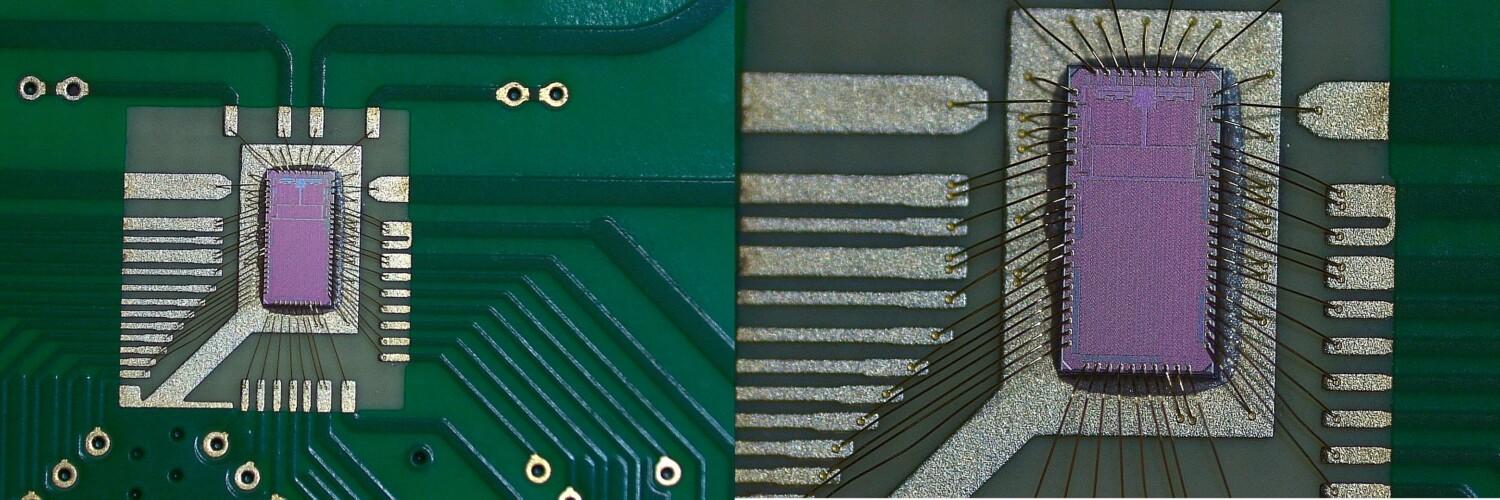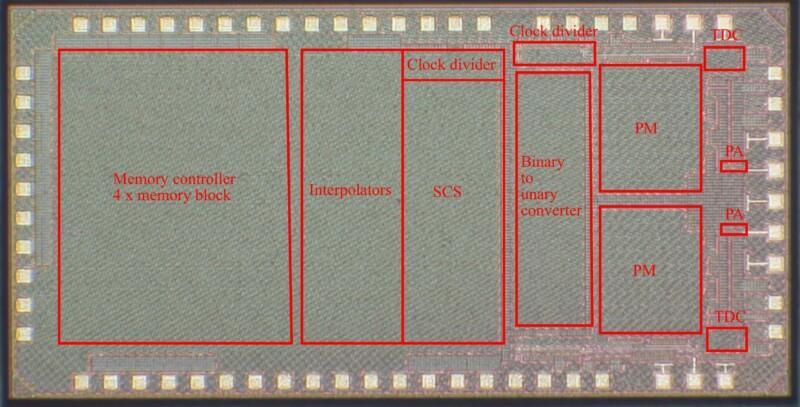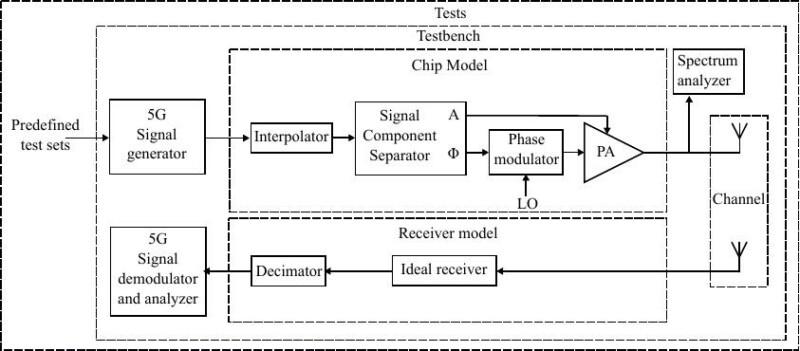
Digital intensive transmitters


Research and design of 5th generation New Radio (5G NR) digital-intensive transmitters with state-of-the-art frequencies and bandwidths. Transmitters are quite complicated structures combining both digital and analog signal processing. Initially, the whole transmitter is modelled and verified with Python in open-source framework named The System Development Kit (TheSyDeKick, https://github.com/TheSystemDevelopmentKit). After a couple of Python models with different levels of details, starting from mathematical system model and ending with hardware comparable models with non-idealities, the actual hardware is designed using third party tools. Verification for hardware model, RTL for digital part and schematic/layout simulations for analog part, is done in the same TheSyDeKick environment. When design is ready it is fabricated and measured still using the same design environment.
Digital-intensive transmitters can have many different architectures/structures, such as Cartesian, polar or outphasing. In Aalto main focus is on time modulation based architectures, namely outphasing and multilevel outphaing. Reasoning for time modulation based architectures lies in development of semiconductor processes that get smaller, faster and use lower supply voltages. This development favors digital-intensive designs and makes amplitude modulation with high resolution harder for analog signals.
Digital-intensive transmitter’s structure can be roughly divided into two domains, digital and analog. Our research interest in digital domain is high speed and reconfigurability. In addition, we are looking for ways to digitally control and calibrate the functionality of the transmitter to achieve better signal quality and multiple output carrier frequencies with the same structure.
Analog domain of our transmitter consists of two sections, phase modulator (PM) and power amplifier (PA). PM functionalities consist of transforming digital input to time delay in output signal. The topic for research is PM design that supports wideband signals with a wide range of output frequencies and high resolution while using the smallest possible area. Currently the minimum time step is in the range of picoseconds (ps). PA shares some similar goals to PM, such as wideband signals with wide range of output frequencies. In addition, PA’s gain and power combining should be sufficient in all output frequencies with good power efficiency.
As a whole, digital-intensive transmitters combine both digital and analog aspects of integrated circuit design and have “real world” applications which are constantly evolving and getting more and more complicated.
